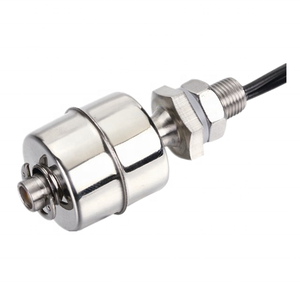Introduction to Hopper Level Sensor
A hopper level sensor is an essential device used in various industries to monitor and manage the material levels within hoppers, silos, or tanks. It plays a critical role in ensuring consistent material flow, preventing overflows, and optimizing storage efficiency. The hoppers, primarily used for bulk solids and liquids, require precise level detection, and that's where hopper level sensors come into play. They are equipped with advanced technologies to deliver accurate readings and enhance operational safety.
Types of Hopper Level Sensors
Hopper level sensors are available in several types, each designed to cater to different materials, operational environments, and specific requirements:
- Ultrasonic Level Sensors: Utilize sound waves to measure the distance to the material surface, ideal for both solids and liquids.
- Capacitive Level Sensors: Operate based on the electric field change when the level of the material changes, suitable for granular materials.
- Radar Level Sensors: Use microwave signals to detect the material level, unaffected by vapor, temperature, or pressure, making them ideal for challenging environments.
- Tuning Fork Level Sensors: Measure level based on the frequency change of a vibrating fork when submerged in the material, perfect for solids.
Applications of Hopper Level Sensors
The versatility of hopper level sensors allows them to be utilized in a myriad of applications across different industries:
- Food Processing: Used for monitoring grain, flour, and bulk ingredients in processing plants.
- Chemical Industries: Essential for controlling and detecting hazardous materials safely.
- Pharmaceuticals: Offers precise level management for active ingredients to ensure consistent quality.
- Waste Management: Monitors levels in waste bins, helping to optimize disposal processes and enhance recycling efforts.
- Mining and Aggregates: Tracks levels of minerals and aggregates, aiding in expansive operations.
Features and Advantages of Hopper Level Sensors
The hopper level sensor boasts numerous features that enhance its performance and usability, providing substantial advantages for users:
- High Accuracy: Delivers precise level measurements, minimizing the risk of overflows and shortages.
- Durability: Built to withstand harsh environmental conditions, including dust, temperature extremes, and vibration.
- Easy Integration: Can be seamlessly integrated with existing systems for process automation.
- Low Maintenance: Designed for long service life with minimal intervention, reducing downtime and operational costs.
- Real-Time Monitoring: Enables operators to receive instant alerts, facilitating proactive management and response.
Conclusion
In summary, a hopper level sensor is invaluable in various industries, delivering precise measurement, enhancing efficiency, and ensuring safety in material handling operations. With diverse types available, specific applications tailored to unique operational demands, and a host of advantageous features, investing in hopper level sensors is a forward-thinking decision for any business involved in bulk material management.


















































